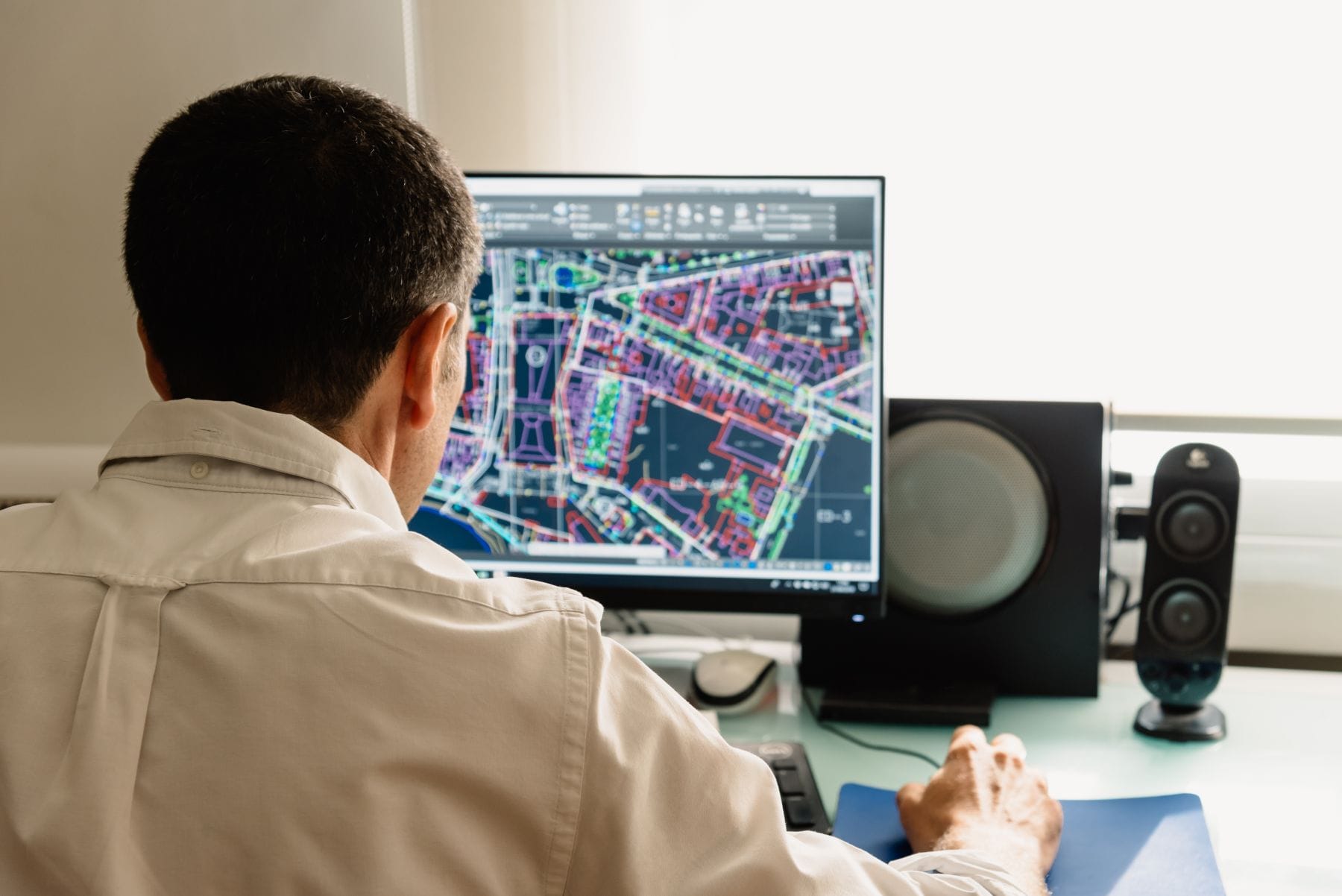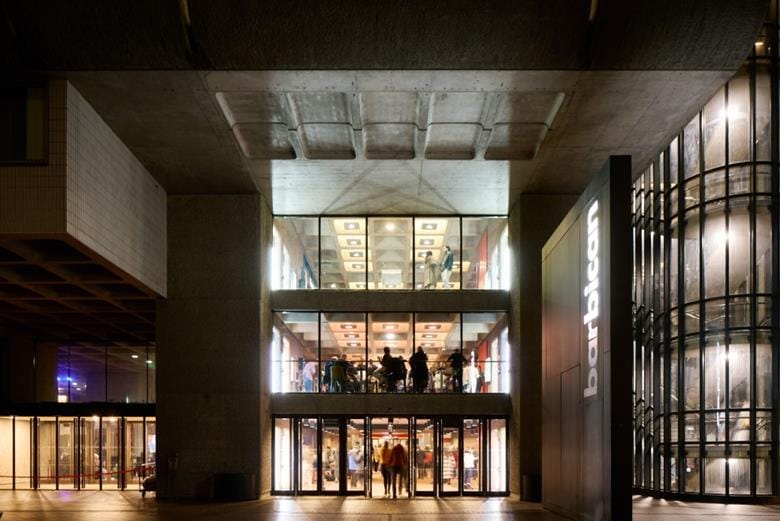What are the key considerations when outsourcing CAD?
Andrew Farahi | November 24, 2025
For smaller, specialist contractors like electrical services, security or fire protection system suppliers, high quality CAD drawings are essential to delivering successful projects, but keeping CAD in-house is costly and inflexible.
Why outsource?
As a smaller firm, it’s doesn’t often make sense to employ in-house CAD specialists. You probably don’t need a full-time CAD designer, so an employee would be under-used.
Added to that staying up to date with CAD developments, the latest software packages and the impact of AI, is a full-time job in itself. Your people are already specialists in the systems you offer and your client requirements, with a full workload before you add in CAD work.
We work with many different contractors, for example:
- HVAC specialists,
- fire system providers,
- electrical services contractors,
- security system providers, and
- building services providers,
who save costs and guarantee excellent quality control by outsourcing to our highly-trained, reliable CAD technicians.
What to look for in a partner
The challenge of outsourcing is finding a suitable partner. If you’re not clear on what to look for, outsourcing can be a minefield. Based on over 25 years of offering CAD services, here’s our guide to what you need to consider when outsourcing CAD.
1. Experience and expertise in your sector
CAD is used in many difference disciplines, and finding a CAD firm with solid experience in construction, MEP, product design, automotive development, city planning, interior design (or whatever you need) is important.
It can make the difference between a seamless delivery that matches your brief and endless rounds of revisions that could delay the project.
Things to check:
- Can they provide testimonials or case studies for similar projects?
- Do they work with a variety of projects, showing the agency is also flexible?
2. Quality of work
When outsourcing CAD, high accuracy and attention to detail matter more than ever. Small errors or assumptions in CAD designs can create costly errors on site.
This can be difficult to assess when you don’t have the expertise in-house, but you can easily check testimonials and case studies to find out. Look for testimonials that consistently mention high quality output and accurate drawings.
Things to check:
- Ask about the quality control process they follow.
- Review testimonials and contact past clients to find out for yourself.

3. CAD Software used
Your ideal outsourcing partner will be using the latest CAD software, choosing the best package for your use case. In construction, for example, AutoCAD is the industry standard.
Outdated software may be cheaper, allowing an agency to keep costs lower, but may be incompatible with newer systems. Older software often lacks features that allow for higher quality drawings and quicker turnaround. The latest CAD software will have more effective quality control features and improved compatibility between 2D and 3D CAD outputs.
Things to check:
- Check their website or ask to find out what CAD software they use – such as AutoCAD, which is the industry standard in construction, electrical services, fire protection, HVAC and all other MEP work.
- Ask which version of the software they use and when it was last updated.
4. Working with your file formats
Does your outsourcing partner use the file formats your systems need, and how will they send the completed CAD drawings? Good interoperability will speed up the whole project.
Sharing files using the Cloud is increasingly common as it allows immediate access via the internet for all project team members. New file versions can also be propagated immediately.
It may seem like a small detail when you’re busy focusing on the success of the overall project, but easily accessing and sharing your files is critical for an efficient workflow.
Things to check:
- Ask what file formats they use.
- Ask about how they manage information sharing and interoperability.
5. Support for custom drawings
How important this is depends on your requirements. For simple projects, customisation may not be important. For more complex or specialised projects, for example in specialised product design for healthcare, there are likely to be many highly specific product requirements along with a design requirement to use high-quality, medical grade materials.
In this case, greater technical expertise is needed to produce highly customised designs.
Things to check:
- Ask if they produce custom drawings.
- Ask about their more unusual projects, what the main challenge were and how they overcame them.
6. Communication
When working to tight deadlines, excellent communication can make the difference between meeting them and missing them. It also has a direct impact on the quality of the outputs: your CAD team must be in regular contact to review requirements and gather feedback.
Things to check:
- Are they asking you questions and checking details about your project – this is a sign of good communication.
- Agree communication channels to be used: for example email; text/WhatsApp; notifications through an online dashboard or others.
- Agree how often progress updates will be shared and who will receive them.

7. Reliability
Ability to meet your deadlines with a quick turnaround is imperative. Missed deadlines in the design phase create costly delays on site. Also, once the CAD work is underway the details of the project become clearer, turning up more specific challenges which can mean more work. You need to be confident your CAD team can still produce the outputs, in the timeframes needed by the project.
Things to check:
- Check to see if they work with the same clients more than once, as clients won’t do this unless their CAD supplier reliably meets their requirements and deadlines.
8. Flexibility
A key benefit of outsourcing is immediate access to CAD skills. If you have more work, you want your CAD partner to meet that demand with you, so how quickly they can scale up matters too. If the size and complexity of your project changes, you want them to service this with ease.
Things to check:
- Look at past projects: do they undertake projects of different sizes and complexity?
- Ask how they manage changing demand for CAD work throughout the year and how quickly they can scale up capacity.
What to be cautious about
To avoid a bad experience, here are the main pitfalls of outsourcing CAD. They can be easily avoided by doing a little research or asking the right questions.
Quality control standards
A potential outsourcing partner may not have the same quality standards or as stringent a quality control process as you. Ensure you ask about this – it is too easy to make assumptions they work in the same ways you do.
(Too) low prices
Managing the project budget is important, but the cheapest prices aren’t always cost effective in the longer term. Offshore CAD suppliers have increased in popularity because they offer cheaper services, however you should also take into account whether a difference in time zones or cultural context could slow down communication, review cycles and project progress.
Data security
The project information you need to share may be commercially sensitive, and unfortunately cyber security breaches are increasingly common. Ensure your outsourcing partner has:
- appropriate confidentiality agreements in place,
- secure data storage and data transmission procedures in place,
- the latest security for any cloud platforms it uses to share design or any other project information.
Too little oversight
Outsourcing takes the design work off your team’s plate, but it doesn’t delegate the overall accountability for the quality and fit of any designs signed off for the next phase of the project. Ensure you have adequate review points before work is signed off.
Make outsourcing easy with MultiCAD
It’s easy to say that, but don’t take our word for it:
Having been a client of MultiCAD for quite a few years now we have used them extensively to produce and amend our electrical services design and installation drawings. This has enabled us to present our designs to our clients with maintained quality and standards, without the time and overheads associated with maintaining a CAD department.
Pacific Security Systems
Contact MultiCAD to talk to one of our expert technicians about your next CAD project.
